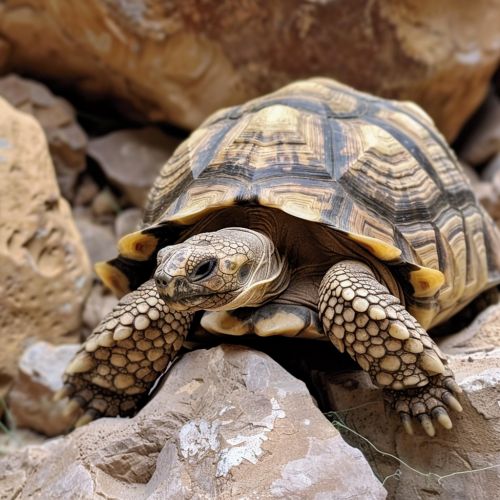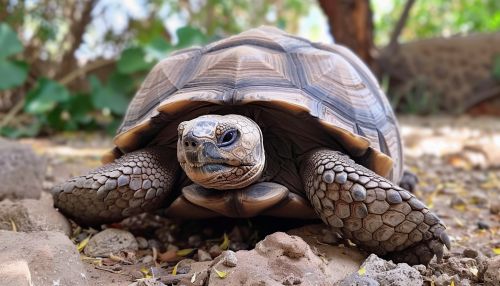Desert Tortoise
Taxonomy and Evolution
The desert tortoise (Gopherus agassizii) is a species of tortoise native to the Mojave and Sonoran deserts of the southwestern United States and northwestern Mexico. It belongs to the family Testudinidae, which is globally distributed and includes around 49 extant tortoise species.


The desert tortoise is closely related to the gopher tortoise (Gopherus polyphemus) and the Texas tortoise (Gopherus berlandieri). These species, along with the Bolson tortoise (Gopherus flavomarginatus), comprise the genus Gopherus, one of the oldest and most primitive groups of tortoises.
Description
Desert tortoises are medium-sized tortoises, typically measuring 10 to 14 inches in length. They have a domed shell, or carapace, that is usually brown in adults and dark tan in younger individuals. The carapace is high and domed, with steep, flattened sides. The front part of the carapace has a pronounced gular projection, which is used in combat with other males.
Habitat and Distribution
Desert tortoises inhabit a range of habitats from sandy flats to rocky foothills, including both the Sonoran and Mojave deserts. They are most commonly found in areas with a rich growth of annual wildflowers, which serve as a primary food source.
Diet
Desert tortoises are primarily herbivorous, feeding on a variety of vegetation including grasses, herbs, annual wildflowers, and new growth of cacti. They also consume small amounts of invertebrates and carrion.
Reproduction
Desert tortoises have a slow rate of reproduction and reach sexual maturity between 15 and 20 years of age. Females lay a clutch of 4 to 8 hard-shelled eggs in the early summer, which hatch in the late summer or early fall.
Conservation Status
The desert tortoise is listed as a vulnerable species by the IUCN. Major threats include habitat loss due to urbanization and disease.
